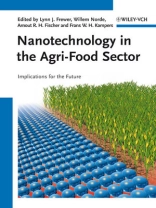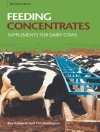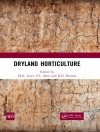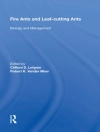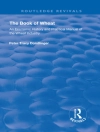Providing an overview of nanotechnology in the context of agriculture and food science, this monograph covers topics such as nano-applications in teh agri-food sector, as well as the social and ethical implications.
Following a review of the basics, the book goes on to take an in-depth look at processing and engineering, encapsulation and delivery, packaging, crop protection and disease. It highlights the technical, regulatory, and safety aspects of nanotechnology in food science and agriculture, while also considering the environmental impact.
A valuable and accessible guide for professionals, novices, and students alike.
विषयसूची
Introduction
PART I: Fundamentals
INTERMOLECULAR INTERACTIONS
Introduction
Water
Hydrophobic and Hydrophilic Interactions
Dispersion Interaction
Electrostatic Interactions
Steric Interactions Involving Soluble Polymers
Epilog
SUPRAMOLECULAR STRUCTURES
Introduction
Self-Assembly
Plant Cells
Organized Self-Assembled Structures
Summary
PART II: Basic Applications
NANOTECHNOLOGY IN FOOD PRODUCTION
Introduction
Food Production
Nanotechnology and Food
Applications of Nanotechnology in Foods
Concerns about Using Nanotechnology in Food Production
PACKAGING
Introduction
Reasons to Package Food Products
Physical Properties of Packging Materials
Antimicrobial Functionality
Visual Indicators
Information and Communication Technology
Discussion
USING NANOPARTICLES IN AGRICULTURAL AND FOOD DIAGNOSTICS
Introduction
Biosensors
Transduction Principles
Examples of Biosensors in Which Nanoparticles Are Being Used
Future Prospects
PART III: Food Applications
NANO-FUNCTIONALIZED TECHNIQUES IN CROP AND LIVESTOCK PRODUCTION: IMPROVING FOOD PRODUCTIVITY, TRACEABILITY, AND SAFETY
Introduction
Sensors
Enzyme Biosensors and Diagnostics
DNA-Based Biosensors and Diagnostics
Radofrequency Identification (RFID)
Integrated Nanosensor Networks: Detection and Response
Conclusions
NANOTECHNOLOGIES FOR IMPROVING FOOD QUALITY, SAFETY, AND SECURITY
Introduction
Improving Quality, Safety, and Security of Agricultural Production
Improving Quality, Safety, and Security in Food Processing
Improving Quality, Safety, and Security in Packaging and Distribution
Wrapping Up
FOOD FUNCTIONALITY AND THE PHYSICS OF BIONANOTECHNOLOGY: SOME EXAMPLES AND CHALLENGES
Introduction: How Are Foods and Bionanotechnology Related?
Physics and Structures in Food Bionanotechnology
Fibrillar Structures
Plate-Like Structures
Spherically Symmetric Structures
Bicontinuous Structures in Protein-Polysaccharide Systems
Gastronomy and the Nanodomain: Molecular Gastronomy
Conclusions
PRODUCTS AND THEIR COMMERCIALIZATION
Introduction
Investment in Nanotechnology Research
Innovations in Food and Agriculture Nanotechnology
Nanotechnology Commercialization
Current and Emerging Markets
Conclusions
PART IV: Nanotechnology and Society
TOXICOLOGY OF NANOMATERIALS IN FOOD
Introduction
What Makes Nanomaterials Special?
Characterization of Engineered Nanomaterials
Safety Assessment of Oral-Exposure Engineered Nanomaterials for Food Application
Conclusions
NANOMATERIALS IN FOOD AND FOOD CONTACT MATERIALS –
POTENTIAL IMPLICATIONS FOR CONSUMER SAFETY AND REGULATORY CONTROLS
Background
Nanomaterials Likely to be Used in Food and Related Applications
Potential Consumer Safety Implications
Current and Projected Applications for Food
Implications for Regulatory Frameworks
Conclusions
ENVIRONMENTAL CONSIDERATIONS OF AND SOCIETAL REACTIONS TO NANOTECHNOLOGY IN THE FOOD SECTOR
Introduction
Life Cycle of Nanotechnology Food Products
Occurrence of Engineered Nanoparticles in the Environment
How Should Society Deal with Uncertainty?
Conclusions
NANOTECHNOLOGY AND FOOD ALLERGY
Introduction
Molecules in Foods Involved in Triggering Allergies
Food Structure, Processing, and Food Allergy
Impact of Nanoscale Structures on Allergenic Potential of Foods
Conclusions
COMMUNICATION OF RISKS AND BENEFITS OF NANOTECHNOLOGY: THE ISSUE OF SOCIETAL ACCEPTANCE OF EMERGING TECHNOLOGIES
Introduction
Science and Society: Lessons for Nanotechnology Applied to Food Production
A Short Introduction to the Psychology of Risk-Benefit Perception
How do People Form Perceptions of New Technologies
Nanotechnology Communication in the Business Context
Conclusion
PUBLIC ENGAGEMENT WITH EMERGING ISSUES IN AGRI-FOOD NANOTECHNOLOGY
Introduction
What Is ‘Public Engagement’?
Evaluating the Effectiveness of Public and Stakeholder Engagement
Public Engagement Examples
Recommendations for Conducting Public Engagement and Public Consultation Exercises
NANO-ETHICS
Introduction: Historical Background
Identifying and Avoiding Unethical Nanotechnological Products
Ensuring Ethical Nanotechnological Research, Innovation, and Production
Nano-Ethics as the Questions of the Good Nanotechnology Society
Conclusion: The Ethical Challenge Ahead for the Nano-Agri-Food Sector
EVOLVING BEST PRACTICE IN GOVERNANCE POLICY –
DEVELOPING CONSUMER CONFIDENCE IN RISK ANALYSIS APPLIED TO EMERGING TECHNOLOGIES
Introduction
Introduction to Food Safety Governance
Potential Innovations to the Risk Analysis Framework as Proposed by SAFE FOODS
Risk Analysis and Nanotechnology
Recommendations
लेखक के बारे में
Lynn Frewer is a researcher and professor at the University of Wageningen and has worked for the Institute of Food Research in both Norwich and Reading. She is a founding editorial board member of the Journal of Risk Research and on the editorial boards of Environmental Biosafety Research and British Food Journal.
Willem Norde is Professor of Bionanotechnology at Wageningen University and professor of Colloid and Interface Science at the University medical Center Groningen. He has 240 scientific publications and is editor of the book Physical Chemistry of Biological Interfaces (Dekker, 2000), author of Colloids and Interfaces in Life Sciences (Dekker, 2003) and he is member of the editorial board of Colloids and Surfaces B: Biointerfaces.
Arnout Fischer is lecturer and researcher in the Marketing and Consumer Behavior group at Wageningen University. His research focuses on public response to novel food products and technologies. He is particularly interested in seemingly irrational behavior leading to good choices.
Frans Kampers graduated in physics from Einhoven University and now coordinates the bionanotechnology research of Wageningen UR which predominantly is aimed at applications in food. He is also a member of the Executive Board of Nano Next NL, the nanotechnology research programme in the Netherlands, and is often invited to give presentations on nano-technology in food.
